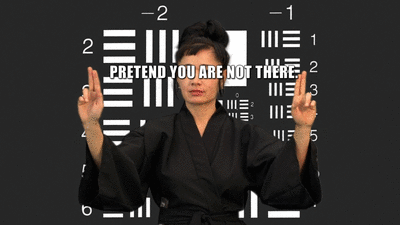
This week with Allison Galgiani, art editor of Bushwick Daily. Talk to her directly on Twitter @Grovesgal about this Friday Editorial.
Not even a couple weeks ago, I began hearing a new term on the proverbial tip of the art world’s tongue: Post-Internet Art. Ugh, a shudder goes through my entire being. Why this sudden uncontrollable reflex? To me, it means the taste-makers that make up these awful phrases have done it: they have catch-phrased the movement in art in which we are living. And now I feel compelled to use it.
Earlier this week the art world was aflutter with talk of the artspace.com’s Andrew Goldstein’s interview with self-proclaimed super collector Stefan Simchowitz, and the equally popular rebuttal by Jerry Saltz. In the interview, among other inflated statements of his own Pinky and the Brain plan to take over the art world, it was brought up that many of the artists that Simchowitz champions fall under the newly-minted term post-internet art. Aside from contemporary artists that fall under this category like Petra Cortright and Jordan Wolfson, Bushwick is notably on the map with net artists, such as the recent “Internet of my Dreams” show at Transfer Gallery, championing net and new media art. In a recent artnet.com article, NY art critic Paddy Johnson worries that what she deems “our era’s greatest art movement” has been almost entirely absent from the Whitney Biennials since 2002. This might be starting to change and the discourse has clearly shifted.
So, what exactly does this mean, and what’s all the fuss about? Why does this differentiation between ‘net art,” and “post-internet” art matter? Without trying to bore you to tears, let’s go back to the advent of the equally difficult to nail down dualism of modern and postmodern art. If you have not taken a 20th Century Art History survey course, you may not have heard, but modernism is dead. The Death of Painting, as proclaimed by Donald Judd and other minimalists to the rise of conceptual art was a clear backlash to the appropriation of modernism by the consumer-driven realms of Ikea and Target. From this came the wave of Postmodernism that existed in the realm of consumer realization; the realization that we lived in a world surrounded by consumerism, advertisements, façade, where nothing is real; enter the realm of the hyper-real and beyond. Please note this is a shrewdly shortened explanation of about forty-five years of art making.
Like a coda to very crux of postmodernism, there was a return to the handmade and un-commodifiable forms of art, especially performance and installation. It can be argued that the rise of mechanical reproduction (thank you, Walter Benjamin) changed the way we experience a work of art and the authenticity of a unique art object becomes less important now that its image is infinitely reproducible. We all know what the Mona Lisa looks like, even if we’ve never been to the Louvre.
The internet changed the way we experienced our world and in a moment where many people have more friends on Facebook than they can keep track of in real life, and experience and accomplishment are measured by how many check-ins you have on Foursquare or pictures of places on your Flickr. Yet as with any new technology, artists have found ways to hack it and use it in unexpected ways. Artists like Ryan Trecartin found ways to use online methods to create their art; sound, video, and graphic art. The problem with this type of artistic exploration of coding and programming, was how do you show it, and more importantly, how do you sell it?
The term “post-internet” in many respects is an art market term that bring works of art that are responding to the way they can use internet tools- search engines, coding, appropriated images, Twitter, etc to create works of art. More importantly to the market, it is brings these works into the gallery. Bushwick’s own Matthew Hillock, a self-described net or new media artist whose new solo exhibition opens this week at Outlet Fine Art, offered his own thoughts on the subject but the artist’s perspective:
“My biggest opinion in this matter that “net” artists today will be the standard, the screen and personal connection that comes with accessing art in your hand is powerful, post internet work seems to fall into what we’re seeing in art fairs – mass produced, consumed and put it online to flood your newsfeed. I honestly think that the object that “post internet” art obsesses with will lose it’s luster just like any other object. The idea of the internet has changed the world, which is true to an extent, however it is more so a tool and a distorted mirror of ourselves (social media isn’t social it’s an illusion to feel social while we are in fact more isolated). ”

(Matthew Hillock’s exhibition opens this weekend at Outlet Fine Art in Bushwick)
The term is getting more and more buzz-worthy and has been brought to the forefront of the art world’s attention as artists work to either try to adapt to a gallery-based model, and what seems to me like bringing the work out of the web and into reality. Whether or not the term sticks through the next generation is still up for debate, if there was any argument about the importance of the web and digital world’s influence on contemporary art, I think we can safely say that it has been put to bed.


